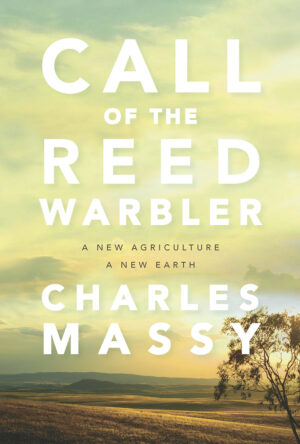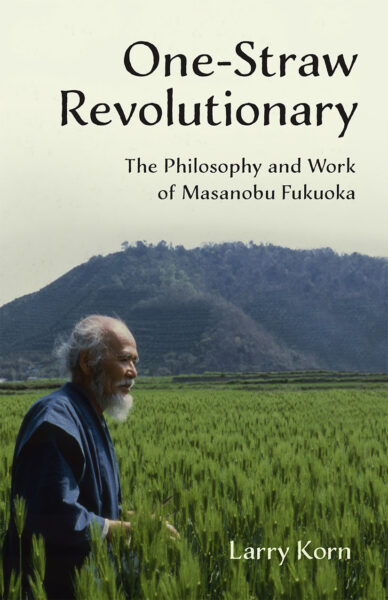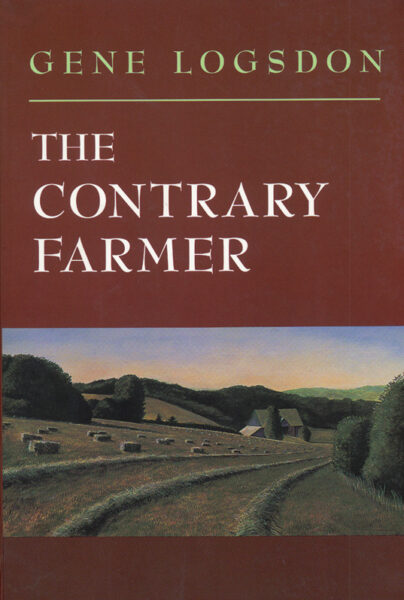Emergence of the Mechanical Mind and Its Dire Implications
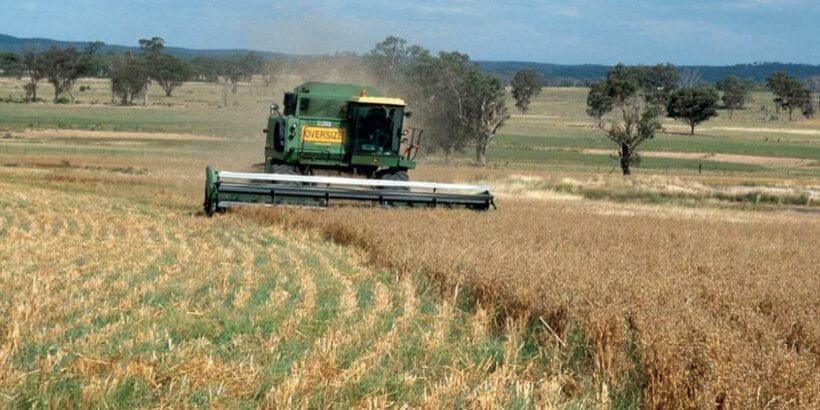
For as far back as we can remember, humans have been driven by the Mechanical Mind – a desire to evolve, to expand, to consume, to manipulate everything around them to meet their needs without thinking about the consequences. Yet some 200,000 years ago, before the advent of agriculture, there was a different view and driving principle known as the Organic Mind where humans were one with the environment. In his new book, Charles Massy argues that if we could find our way back to that view perhaps we can begin to reverse the effects brought on by the mechanical mindset
The following excerpt is from Call of the Reed Warbler by Charles Massy. It has been adapted for the web.
Prior to the beginning of agriculture, a world view called animism had reigned for 200,000 or more years in many human societies. This view constituted the Organic mind, as it did not see humans as being separate from their environment, or from an objective reality. Instead, reality was an interconnected, spirit-filled landscape in which non-human entities – plants, animals, inanimate objects (such as rocks, rivers, mountains) or phenomena (such as thunder, wind, shadows) – possessed a living soul or spiritual essence and had awareness and feelings. Animism’s significance was that it contained strong ethical and spiritual implications for nurturing and sustaining the Earth: an associated value system.
The shift from this Organic mindset to our society’s dominant Mechanical world view was triggered by the development of domesticated agriculture some 10,000 or so years ago. In time, domestication meant that plants, animals and other natural phenomena became manipulable property, as opposed to sacred beings or entities. Consequently, from the dawn of agriculture until the Renaissance of late fifteenth-century Europe, humans on the European and south-west Asian continents, in particular, began a slow process of progressively throwing off the long, coevolved Organic mind that had previously bound them to nature, Mother Earth and a spiritual world.
This new cultural practice of agriculture and its resultant abundance of food eventually led to population growth and intensified urban living, which culminated in the ‘Urban Revolution’ and the appearance of the first cities. Thence came the rise of large-scale political and social systems: all an increasingly far cry from our genetic evolutionary conditioning as hunter-gatherers invested in the Organic mind.
“So destructive has the agricultural revolution been that, geologically speaking, it surely stands as the most significant and explosive event to appear on the face of the earth, changing the earth even faster than did the origin of life.”
Wes Jackson, New Roots for Agriculture1
Humans now began to focus in on themselves and their societies (the beginnings of ‘humanism’). Part of this involved people beginning to apprehend the power of the human mind to manipulate the Earth and its resources. Therefore, a massive shift in value systems, ethics and morals began to occur. Less and less was there an unquestioning recognition of the worth of all natural things, or of the concept of cyclical renewal, of what ecological historian Carolyn Merchant described as ‘the binding of nature into a close-knit holistic unity’.2 So human cultural evolution now radically shifted.
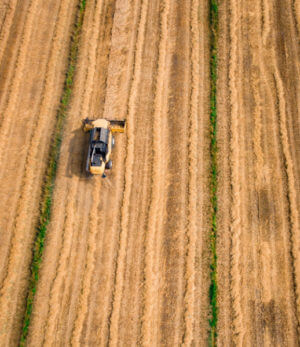 Leading up to the Renaissance and Reformation, there was a coalescence of powerful forces in Western culture that weakened the remnants of the Organic metaphor and opened the way to an inculcation of the Mechanical metaphor.
Leading up to the Renaissance and Reformation, there was a coalescence of powerful forces in Western culture that weakened the remnants of the Organic metaphor and opened the way to an inculcation of the Mechanical metaphor.
A key influence was Judeo-Christianity. This gave us, as Carolyn Merchant pointed out, ‘The idea of man as nature’s guardian and caretaker … a managerial interpretation of the doctrine of dominion’. This then blended with classical and pastoral attitudes towards nature as being something that could be ploughed and cultivated, used as a commodity and manipulated as a resource, tamed and subdued for human benefit – particularly by males. This world view also saw females as passive and receptive: thinking incorporated into the new Mechanical world view. Such a mindset was easily and quickly adapted from the sixteenth century through to the eighteenth-century Enlightenment: that crucial phase of the scientific revolution and the evolution of the market economy.3
Thousands of books have been written about this epoch-changing phase that occurred from around 1500 to 1800 in Western Europe, which involved a major shift in the Western mind from an Organic to a Mechanical model. The Mechanical model meant humans perceived the world as a place where matter and nature were inert constituents of a new, machine-like world – one capable of manipulation. I will only pull out a few key points on this remarkable period, but the consequences were multiple.
The major phase of the metaphorical shift to the Mechanical, argued Carolyn Merchant, really began when ‘the image of an organic cosmos with a living female earth at its centre gave way to a mechanistic world view in which nature was reconstructed as dead and passive, to be dominated and controlled by humans’.4 The result, in modern times, is that Western society no longer regards nature as a nurturing mother, nor holds her in reverence, nor treats her with respect. As historian Henri Frankfort wrote in 1949, ‘The world around us has become an “it” rather than a “thou”.5
This mindset has awful complications, and has led to a blind belief in the tenets of economic rationalism, in limitless but necessary growth, and in the virtues of prioritising wealth. In the words of the contemporary philosopher John Ralston Saul, the West in particular (but now spreading globally) ‘has become addicted to a particular set of illusions in order to avoid coming to terms with its own reality’.6 This reality is that our unsustainable behaviour has precipitated us into the Anthropocene.
In the most fundamental of respects, therefore, by this twenty-first century, the Mechanical mind had gone ‘rogue’. And it had gone rogue for the craziest of reasons and the most seductive of all illusions: consumption and greed.
Notes:
- Jackson, New Roots for Agriculture, p.2.
- Merchant, The Death of Nature, p. 268.
- , pp. 20, 249.
- , p. xvi.
- Frankfort, 1949.
- Saul, p. 13.
Recent Articles
Garlic mustard: while known as “invasive,” this plant can be consumed in its entirety and has great nutritional value. Plus, the garlic-flavor is a perfect addition to any recipe that calls for mustard! The following are excerpts from Beyond the War on Invasive Species by Tao Orion and The Wild Wisdom of Weeds by Katrina…
Read MoreEveryone loves a refreshing, fermented, nutritious drink…even your garden! Take your fermentation skills out of the kitchen and into the garden by brewing fermented plant juice. The following is an excerpt from The Regenerative Grower’s Guide to Garden Amendments by Nigel Palmer. It has been adapted for the web. How to Make Fermented Plant Juice Fermented…
Read MorePeregrine falcons, while known as predators, are essential to our environment. These stunning birds have a rich history, an interesting present, and an uncertain future. The following is an excerpt from Feather Trails by Sophie A. H. Osborn. It has been adapted for the web. Who Are Peregrine Falcons? Though relatively uncommon wherever it occurs,…
Read MoreWant to see your crops thrive this upcoming growing season? The key is in soil fertility and health. Spend time maintaining your soil’s health to guarantee bigger and better crops come harvest time! The following is an excerpt from No-Till Intensive Vegetable Culture by Bryan O’Hara. It has been adapted for the web. What Is Soil Fertility?…
Read MoreMany know the effects of catnip on our feline friends, but few realize that catnip has medicinal effects for humans. From stomach aches to reducing fevers, catnip is a versatile herb with many benefits. The next time you grow this plant for your cat you may end up taking a few cuttings for yourself! The…
Read More

